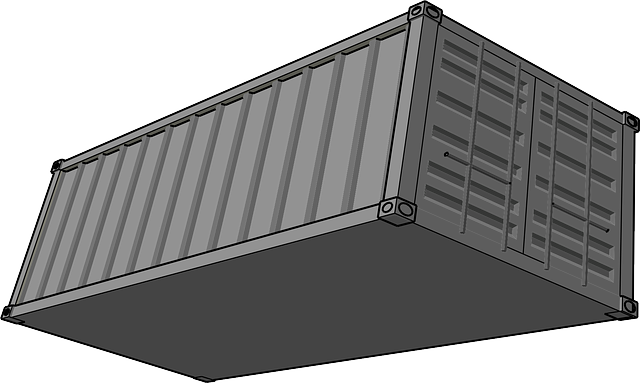Small fleet liability coverage is a vital tool for businesses operating fleets, offering protection against financial losses from accidents, property damage and injuries. By understanding this coverage, which includes medical expenses, legal fees, and business interruption costs, fleet owners can customize policies to their needs while maximizing savings. Safe driving practices, regular vehicle maintenance checks, and strategic planning are key risk management strategies that significantly reduce operational costs and protect against accidents and legal expenses. Green Delivery Services serves as a successful example of integrating proactive risk management and tailored insurance strategies, achieving a 25% annual reduction in small fleet liability coverage expenses without compromising safety.
In today’s competitive landscape, maximizing savings through risk management is crucial for small fleets. This article guides you through essential practices to optimize your insurance costs and minimize liabilities. We explore ‘Small Fleet Liability Coverage’ and its significance in mitigating risks. Learn effective safe driving techniques to reduce claims and implement strategic risk management strategies for long-term financial health. Discover real-world case studies demonstrating the success of these approaches.
Understanding Small Fleet Liability Coverage: Why It Matters

Small fleet liability coverage is an essential component of risk management for businesses operating a fleet of vehicles. It protects against financial loss in the event of accidents, damage to property, or injuries sustained by others involved in these incidents. For small fleet owners, understanding this type of coverage is crucial as it can significantly impact their operational costs and legal liabilities.
Knowing what’s included in your small fleet liability coverage is vital. This typically includes compensation for medical expenses, legal fees, and damages related to accidents. It also covers business interruption losses if a vehicle is disabled or destroyed. By recognizing the importance of this coverage and customizing it to their specific needs, businesses can maximize savings while ensuring they’re prepared for potential risks on the road.
Safe Driving Practices to Reduce Claims and Costs

Safe driving practices are a driver’s best weapon against costly claims and elevated insurance premiums. By adopting defensive driving techniques, such as maintaining a safe following distance, adhering to speed limits, and avoiding abrupt maneuvers, drivers can significantly reduce their risk of accidents. These simple yet effective habits not only protect drivers but also contribute to a smoother, more predictable driving experience for everyone on the road.
Additionally, fleet managers should encourage regular vehicle maintenance checks to ensure that cars are in optimal condition. Well-maintained vehicles are less prone to breakdowns or mechanical failures, which can lead to accidents and costly repairs. Moreover, investing in small fleet liability coverage can provide extra protection against potential risks, offering peace of mind and financial security for both drivers and employers.
Risk Management Strategies for Long-Term Savings

In the realm of risk management, strategic planning is key to achieving long-term financial stability and savings. For businesses with a small fleet of vehicles, implementing robust safety measures can significantly reduce operational costs. One effective strategy involves securing adequate small fleet liability coverage. This insurance not only protects against potential accidents but also includes legal expenses, offering peace of mind and financial safeguard. By choosing the right policy, companies can minimize risks associated with on-the-road incidents, ensuring a steady financial foundation for future growth.
Additionally, regular maintenance checks, driver training programs, and adopting eco-friendly driving practices contribute to overall risk mitigation. These measures not only enhance vehicle safety but also promote environmental sustainability, reducing operational costs in the long run. Such proactive risk management strategies enable businesses to stay competitive while maximizing savings, ensuring a thriving future despite fluctuating economic conditions.
Case Studies: Success Stories of Safe Driving & Insurance Optimization

In the realm of fleet management, success stories of safe driving and insurance optimization are numerous and inspiring. Consider a small business, “Green Delivery Services,” which implemented rigorous safety protocols and utilized advanced tracking technology. By reducing speed limits, encouraging defensive driving techniques, and regularly maintaining vehicles, they significantly lowered accident rates. This not only improved their reputation but also led to substantial savings on their small fleet liability coverage.
A complementary strategy involved data-driven decision making. Analyzing historical claims data helped identify high-risk areas and driver behaviors. Adjusting their insurance policies accordingly, they secured more comprehensive yet cost-effective coverage. As a result, Green Delivery Services achieved a remarkable 25% reduction in annual insurance expenses without compromising on safety standards. This case highlights the power of combining proactive risk management with tailored insurance strategies for maximum savings.
By implementing safe driving practices, risk management strategies, and understanding the importance of small fleet liability coverage, businesses can significantly maximize savings over time. These measures not only reduce claims and costs but also contribute to a safer working environment for drivers. As seen in the presented case studies, adopting these practices can lead to substantial insurance optimization success stories. Embracing these strategies is a proactive step towards ensuring long-term financial stability and operational efficiency for small fleets.
